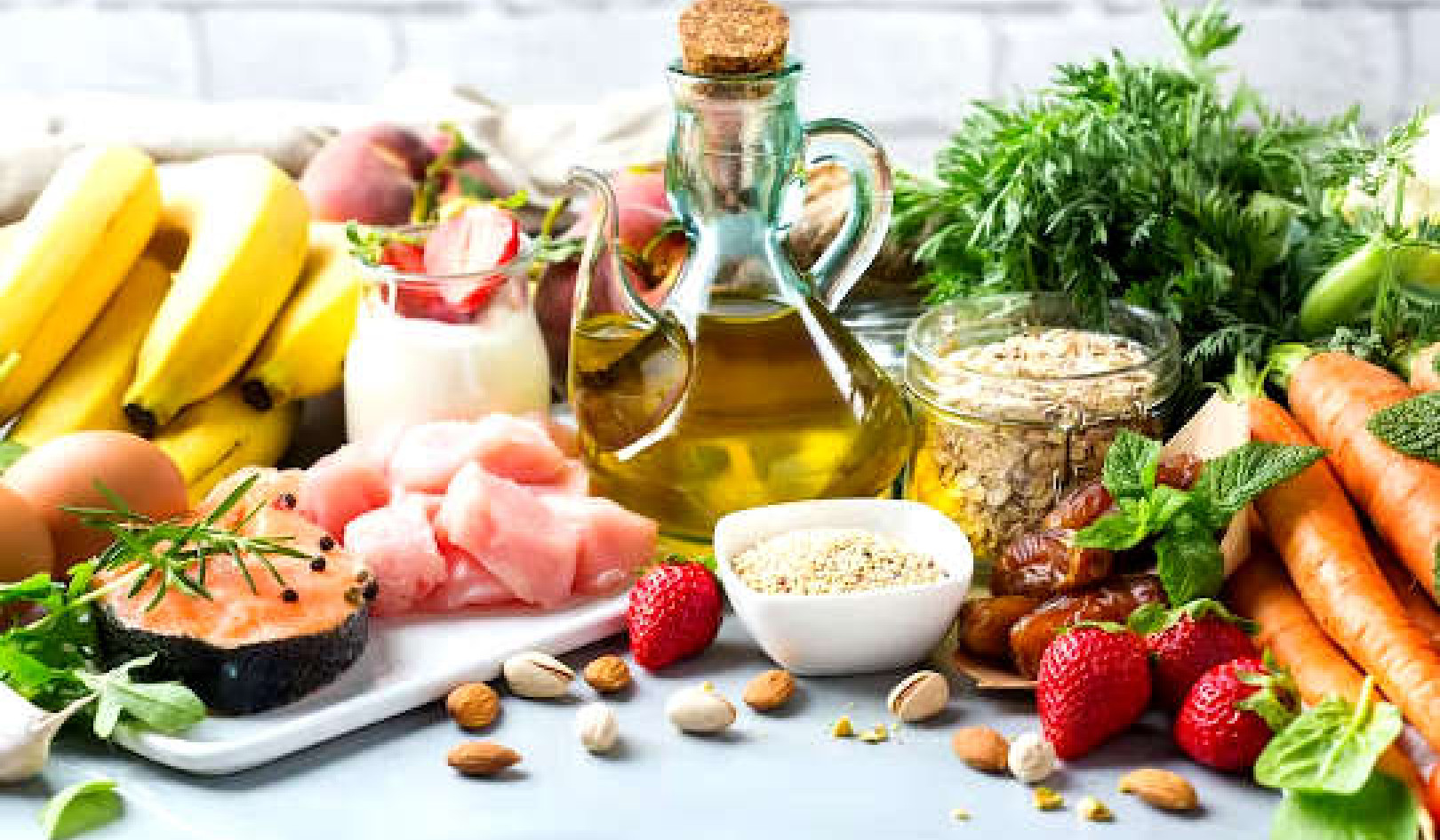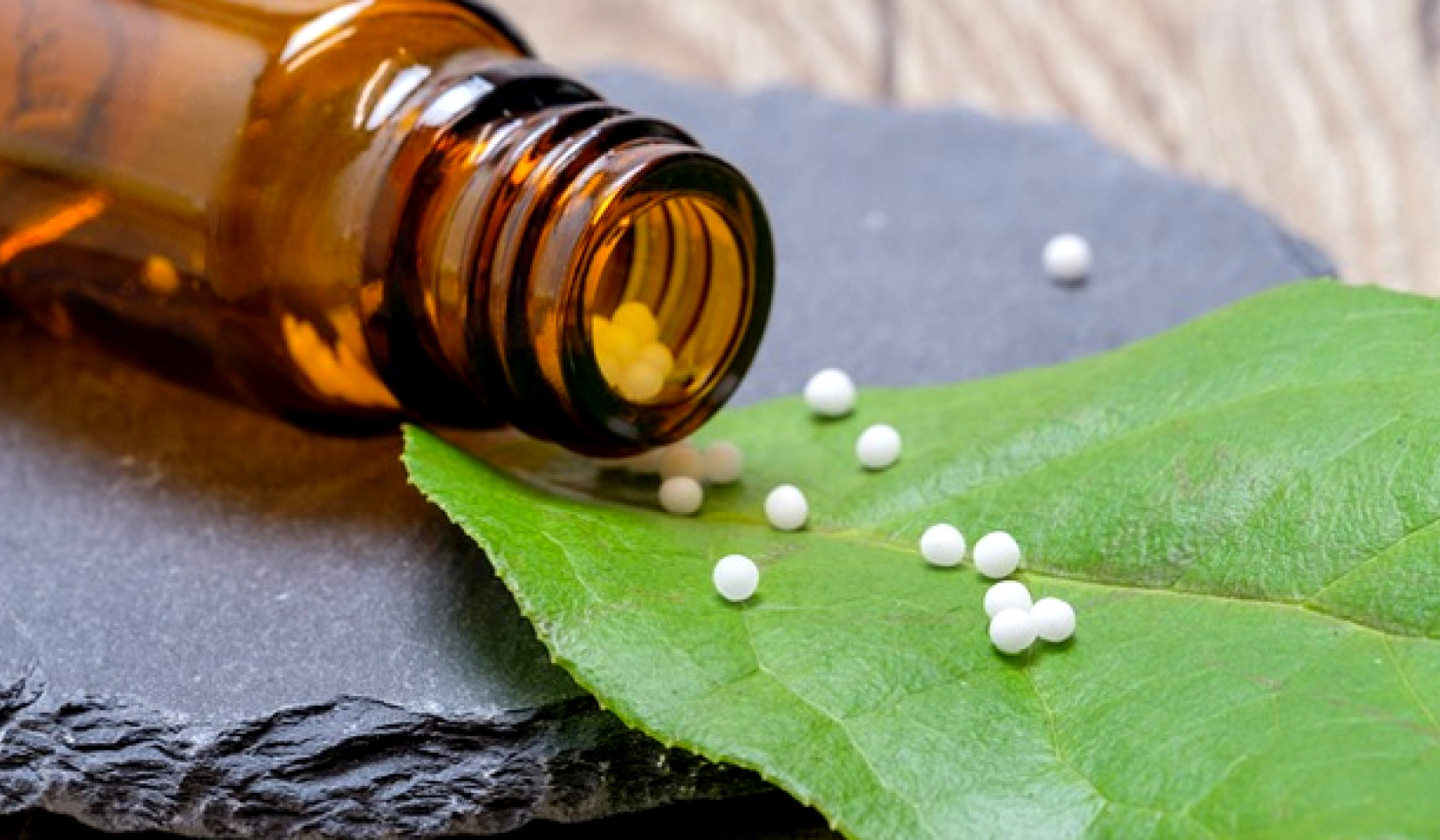
Illustrations by Annie Brulé.
A panacea garden awaits our next steps. In early summer, we introduced seven traditionally healing wildflower plants (Part 1 of Wildflower Apothecary) and how to invite them into our gardens. Now is the time for harvesting and transfiguration.
Before foraging and formulating begins, good harvesting ethics should be addressed as a reminder that reciprocity begins with mindfulness. Respectfully removing parts of plant communities begins with the harvester making an offering. This can be a prayer or a song or maybe tidy up the space around the plant. Also, don’t take too much, make it look like you were never even there. Hold good thoughts and consider how you want people to feel when they experience your finished product.
Establishing a mindful apothecary is an empowering process and an incredible healing journey rich with stories and memories. For more information on uses and precautions, you can check websites of the Botanical Society of America and National Institutes of Health, or ask naturopathic health care providers.
Part 2: Fall
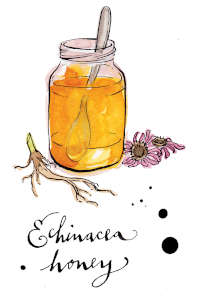 Echinacea Medicine
Echinacea Medicine
Echinacea is effective for treating infections, inflammation, sore throats, coughs, and toothaches. The fresh root produces a numbing sensation for the tongue, gums, and throat that can ease the discomfort of cold symptoms.
Taste: Earthy, subtly spiced, and heavily floral flavor
Harvest: Root, leaf, and flower
Preparations: Tea, honey, and syrup
Echinacea-Infused Honey: Harvest the roots of Echinacea after the lower temperatures of the autumn season arrive. At this time, the vitality of the plant begins to move toward its anchor, fattening up rootlets to store food and energy through the winter. Carefully dig up the roots (remember to leave some behind so the flower can return next year). Rinse the roots well by removing as much dirt as possible. Let them dry overnight or for the day. Put about 2 tablespoons of Echinacea root in a clean glass jar and completely cover with 4 ounces of honey (preferably local and raw). Allow the Echinacea root honey to steep for one to two weeks. Press out the honey from the roots and discard them. Store the honey in a cool, dark place. Take a spoonful to ease sore throats and address oncoming colds as needed.
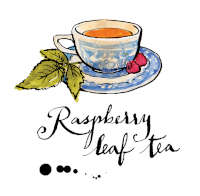 Red Raspberry Medicine
Red Raspberry Medicine
Raspberry leaf is high in vital nutrients including vitamin C, iron, magnesium, and potassium, making it very effective as a blood vessel tonic. It is useful for a variety of conditions that support female fertility, from soothing labor pains to easing contractions and alleviating muscle cramps.
Taste: Full-bodied floral flavor with sweet mineral tones
Harvest: Leaf, root, and berry
Preparations: Tea and syrup
Raspberry Leaf Tea: After harvesting the raspberries, cut flowering Raspberry canes near the base of the plant, bundle the stems together in groups of no more than six. Using a rubber band, tie them and hang upside down in a cool, dry place out of the sunlight. In about a week, the leaves and petals should dry out completely. Carefully remove the dried leaves from the stems and store them in a covered jar out of direct sunlight. Prepare a cup of tea with your harvest by adding 1 tablespoon crushed dried Raspberry leaves to 8 ounces of hot water. Steep for 15 minutes.
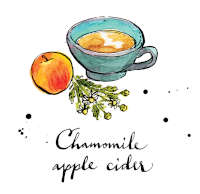 German Chamomile Medicine
German Chamomile Medicine
Delicate Chamomile flowers have magic to handle a variety of maladies. They have traditionally been used to address indigestion, diarrhea, flatulence, anxiety, depression, and insomnia; and as topical treatments for chickenpox, diaper rash, and even eye infections.
Taste: Soft, golden delicious apple flavor with mellow floral honey notes
Harvest: Leaf and flower
Preparations: Tea, honey, and syrup
Calming Chamomile Cider: Harvest blossoms as they appear and dry them in a flat, well-ventilated basket until they are completely dry. This should take about a week. Steep Chamomile flowers in hot water for 10-15 minutes, using 1 tablespoon for every 8 ounces of hot water. Add equal parts fresh apple cider for an antioxidant-rich and calming beverage.
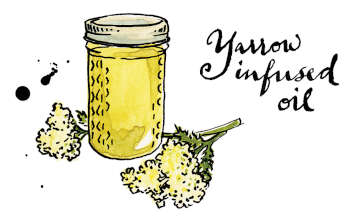 Yarrow Medicine
Yarrow Medicine
Aromatic blossoms harvested at the height of flowering can be dried and used as an emergency tonic to stimulate healing and stop wounds from bleeding. Topically, Yarrow diminishes bacterial infection and can cool inflammation. Internally, Yarrow stimulates the immune system and can break a fever and relieve aches and pains caused by cold and flu symptoms. People who are pregnant or breastfeeding should avoid using Yarrow.
Taste: Very bitter and intensely aromatic
Harvest: Leaf and flower
Preparations: Tea, infused oil, salve
Yarrow-Infused Herbal Oil: Harvest full Yarrow blossoms and wilt them in a shallow basket for a day. In a sterile jar, add wilted blossoms and submerge in a cold-pressed oil such as extra virgin olive oil, grapeseed, or almond oil. Cover the jar with a tight-fitting lid and set it in a sunny spot. Allow the energy of the sun to gently extract the medicine from the blossoms for up to a week. Strain flowers from the oil using a cheesecloth or fine mesh strainer and store oil in a clean jar. Apply oil topically to irritated, itchy skin, or to wounds that need assistance in healing.
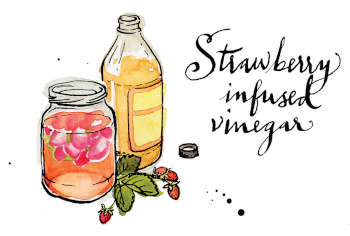 Strawberry Medicine
Strawberry Medicine
Trifoliate leaves and seed-embossed berries are rich in vitamins and minerals that support the cardiovascular system, particularly supporting blood vessels associated with women’s health. Cooling down the body internally, Strawberry eases inflammation and can provide relief for nausea, bloating, and diarrhea.
Taste: Strong berry flavor with a puckery, astringent finish
Harvest: Leaf, flower, and berry
Preparations: Tea, syrup, infusions
Strawberry Vinegar: Berries lend their flavor to vinegar easily and get along with seemingly any vinegar variety— apple cider, white wine, and balsamic are excellent options. In a sterile jar add sliced, fresh berries and the leaves of Strawberry, then completely submerge them in your vinegar of choice, making sure nothing is sticking out of the top. Steep for a week and then strain out the plant material. Store in a cool, dark place and use in homemade vinaigrettes, or anywhere you’d use regular vinegar. You could add a splash of Strawberry vinegar to soda water for a digestive boost. If you feel inspired, add other spices and herbs to deepen the flavor profile.Here are some fun combinations:
- Strawberries, Strawberry leaves, vanilla bean, and balsamic vinegar
- Strawberries, rosemary, a few peppercorns, and white wine vinegar
- Strawberries, lemon peel, basil, and apple cider vinegar
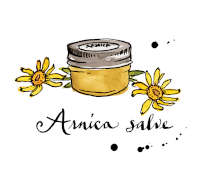 Arnica Medicine
Arnica Medicine
Arnica flowers pack strong anti-inflammatory properties that trigger pain-relieving processes as soon as their medicine is applied topically. Arnica soothes strained muscles, clears up bruises, and offers pain relief for conditions such as osteoarthritis and carpal tunnel.
Taste: Bitter, do not eat.
Harvest: Flowers
Preparations: Topical oil, tincture, salve
Arnica Repair Salve: Harvest Arnica blossoms and follow instructions for Yarrow. Once the oil is infused, strain flowers from the oil using a cheesecloth or fine mesh strainer. In a double boiler on the stovetop, add 1 ounce of beeswax to 5 ounces of Arnica-infused oil and gently heat until the beeswax melts. When the beeswax disappears completely and only hot oil liquid remains in your pan, remove from the heat and pour into glass storage containers with tight-fitting lids. Small jam jars work just fine. At this point, you can add essential oils of lavender or peppermint if you desire. Allow the hot oil to cool to room temperature and solidify. Apply topically to ease sore muscles, tired feet, and areas experiencing bruising, spasming, soreness, or sprains. The salve will last up to 12 months.
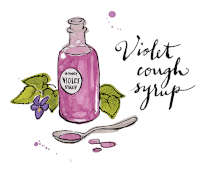 Violet Medicine
Violet Medicine
Tiny leaves and cute flowers of Violet can be eaten fresh and are high in vitamins A and C. It is also an excellent natural source of salicylic acid, the base ingredient for aspirin, so Violet can soothe irritated tissue and ease inflammation. Internally, Violet activates lymphatic fluids, alleviating congested tissues.
Taste: Bittersweet, floral with sophisticated aromatic notes
Harvest: Flower, leaf, and root
Preparations: Tea, honey, infused oil, and syrup
Violet Cough Syrup: Dry the blossoms and leaves by laying them out evenly in a flat drying basket. They should be completely dry within a week. Make a strong tea by steeping 3 tablespoons in 8 ounces of hot water for 20 minutes. Strain plants from hot water and mix in 12 ounces of local, raw honey. Store in a clean jar in the refrigerator. Take 1 tablespoon as needed to soothe dry coughs and ease symptoms of respiratory infections.
 About The Author
About The Author
Valerie Segrest (Muckleshoot) is a nutrition educator who specializes in local and traditional foods. She is regional director for Native Food and Knowledge Systems for the Native American Agriculture Fund.
Illustrations by Annie Brulé.



















